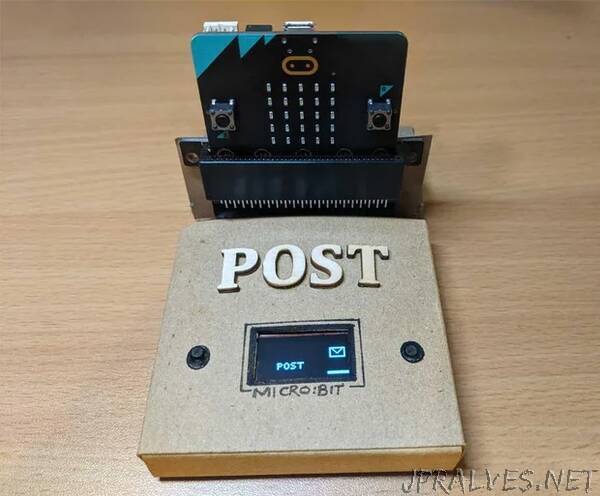
“There was a time when every kid wanted a Nintendo Game & Watch handheld electronic game. This combined a very simple LCD screen with a very simple game mechanic. An early example was the Fire game, where you moved the firemens safety net left or right to bounce residents from a burning building on the left into a waiting ambulance on the right.
Let’s add an OLED screen to the BBC Micro:bit to create an homage to these games. We’ll need to use a breakout board and a breadboard to connect the Micro:bit to a 128x64 OLED display, and we’ll need to write the game in Python. Well call the game Post, and bounce letters from left to right using a paddle.
Because we’re using an OLED screen, we’ll need to create the real thing rather than use Tinkercad. We’ll need at least the following:
A Micro:bit (ideally version 2, to include sound with our game without requiring additional components);
A Micro:bit breakout board which exposes its Inter-Integrated Circuit (I²C) ports 19 and 20, such as the Keyestudio Prototype Breakout Board;
A simple breadboard with power rails, such as the Kitronik Small Prototype Breadboard;
A 1.3” 128x64 OLED display, supporting I²C, such as the Keyestudio OLED Display;
Two buttons suitable for a printed circuit board (PCB), such as the Kitronik push switches; and
Male-to-male breadboard jumper wires, such the Kitronik pack.
If you’d like to go beyond a breadboard prototype, and make a real handheld game, you’ll also need the following:
A simpler Micro:bit breakout board which exposes I²C ports 19 and 20, such as the Keyestudio Breakout Board Adapter;
A printed circuit board (PCB) breadboard with power rails, such as the Adafruit Perma-Proto Breadboard;
Optionally, a 3V button battery and holder, such as the Wurth battery holder; and
Craft materials, such as cardboard, with which to create a case.”
